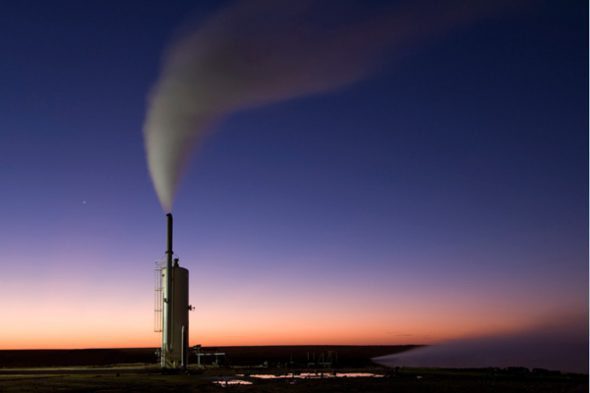Australia’s flagship geothermal developer, Geodynamics, has written down the value of its Cooper Basin operations and plant assets, citing the subdued outlook for electricity demand in Australia.
The decision to write $88.8 million off its Cooper Basin assets comes as the company completes a trial of its 1MW Habanero pilot plant near Innamincka, which sourced energy from super-heated rocks 4.2kms below the surface – deeper than any other geothermal plant in the world.
However, despite the fact that the carrying value of deferred exploration and development costs have been written down to zero, and the Habanero plant down to “fair value”, Geodynamics said the does not change its view about the future of enhanced geothermal systems (also known as hot rocks geothermal technology).
Geodynamics said the results from the Habanero trial, including steam flows and reliability, supported its belief that EGS could play a material role in Australia’s energy future because it could deliver large scale, continuous, predictable and controllable energy.
But it said that developing the Cooper Basin resource will require “significant capital investment” for further exploration, development and to extend transmission infrastructure.
“Under the current market conditions, this scale of expenditure is not economic and significant changes in the level of demand and improvement of wholesale power prices will be required to support such national scale infrastructure development,” the company said.
The National Electricity Market is experiencing an unprecedented fall in demand, caused by the popularity of rooftop solar PV, the impact of energy efficiency measures, and declining manufacturing and industrial activity in some areas.
AGL Energy recently said that 9GW of baseload power is surplus to requirements. Geothermal energy producers would look to compete with baseload power generators. Origin Energy, a former partner to Geodynamics, last week expressed frustration that the renewable energy target provided no support for emerging technologies such as geothermal.
Geodynamics says it is still developing plans for an initial smaller scale commercial project of 5 – 10 MW to supply companies such as Santos, Beach, and Chevron who are looking to exploit shale gas and shale oil developments in the region.
Geodynamics said this would require six wells to be operating. It is currently in discussions with potential customers and funders and says it hopes to secure a power purchase agreement this financial year to allow the project to proceed.
“With the continued exploration for unconventional gas and oil … the market for energy, both power and industrial heat in the Cooper Basin has substantial potential to grow. We believe our Innamincka resource is well positioned to supply this market as these projects are developed. “
The write-down caused the company to report a net loss of $105 million for the 2012/13 financial year.










